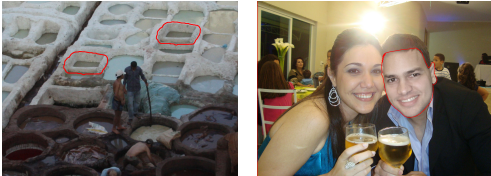How Good Are You at Detecting Digital Forgeries?
Back in 2010, the Australian public was enthralled by a case of fraud in which the fraudster convinced people of his credentials by producing pictures of himself with Pope John Paul II, Bill Clinton, Bill Gates, and others. In this way, the fraudster raised £7 million from investors who were taken in. The pictures, of course, were forgeries.

That raises an interesting question: how good are we at spotting images that have been doctored in some way? The answer is important because it gives an insight into how easily we are likely to be fooled and how likely we are to be the victims of image-based crime.
Today, we get an answer of sorts to this question thanks to the work of Victor Schetinger at the Federal University of Rio Grande do Sul and a few pals who have measured how easily humans are fooled by doctored images. And their results make for uncomfortable reading.
In recent years, image-based crime has slowly become more common. That’s not really a surprise, given the abundance of image manipulation software out there and the ease with which it can be used to manipulate images. So there are plenty of images out there to examine.
Schetinger and co began by assembling a set of faked images from three forensic image databases. The resulting set was made up of 177 images, of which 97 were forged either by erasing some element from the picture or adding one.
The team then asked 393 people to decide whether an image had been forged and if so, to click on the region in question. These people were all well-educated but with no special expertise in forgery detection. That produced over 17,000 responses.
The results show just how poor humans are at this task. “Our results indicate that people show inaccurate skills at differentiating between altered and non-altered images … only identifying the modified images 46.5 percent of the time,” they say.
That’s only marginally better than chance. And the team’s observations about the results are not more comforting. They say there was no general conclusion over which forgeries were the hardest to detect—even the most explicit forgeries were missed by some people.
The team asked these people why they had missed the forgery and received a range of excuses, from the image being too cluttered or that they simply did not examine that part of the image. In itself, these answers might be interesting tips for forgers.
The bottom line is that forged images are hard for humans to spot. And that means we are all at risk of being fooled by forgeries like those that enthralled Australia in 2010.
Ref: arxiv.org/abs/1509.05301 : Humans Are Easily Fooled by Digital Images
Keep Reading
Most Popular
Large language models can do jaw-dropping things. But nobody knows exactly why.
And that's a problem. Figuring it out is one of the biggest scientific puzzles of our time and a crucial step towards controlling more powerful future models.
How scientists traced a mysterious covid case back to six toilets
When wastewater surveillance turns into a hunt for a single infected individual, the ethics get tricky.
The problem with plug-in hybrids? Their drivers.
Plug-in hybrids are often sold as a transition to EVs, but new data from Europe shows we’re still underestimating the emissions they produce.
Stay connected
Get the latest updates from
MIT Technology Review
Discover special offers, top stories, upcoming events, and more.